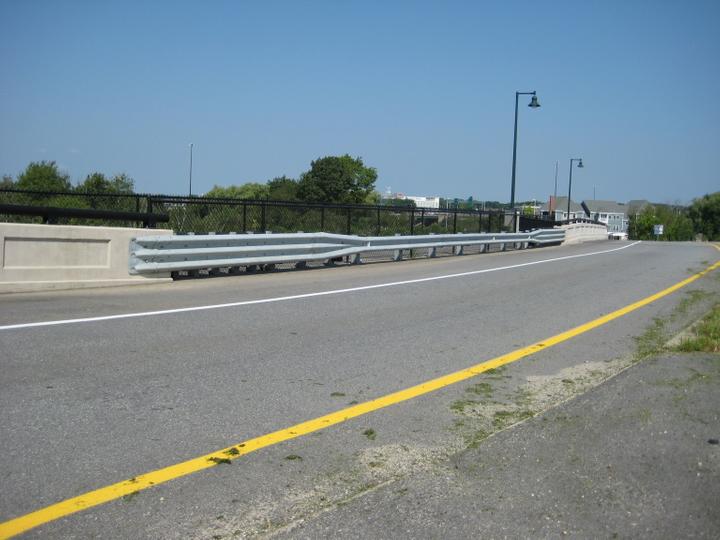
These cases should be looked at on a case-by-case basis. Q6: If there is a barrier protected sidewalk or shared-use trail on the bridge, should guardrail be used between the trail and the roadway? 17-07-TS-02 (PDF) for more details regarding existing bridges. Contact the State Aid Bridge Office if you’d like assistance in determining if this barrier transition is needed. They are also developing transition details for Type G and Type J bridge barriers. The MnDOT Bridge Office has used a Type F to Type S barrier transition which transitions into the new Type S (Single Slope) barrier, of which there are standard connection details for.

The new Type 31 connection plate is simply too tall and doesn’t interface well with the sloped face of the older Type F barriers. Q5: Can the new Type 31 guardrail be connected to an F-Barrier or an older barrier? It is advised to use the new Type 31 guardrail system if at all possible. It can only be connected to a Single Slope (Type S) Barrier or a Vertical Face Parapet barrier. This new connection is much taller and has more connection bolts. It differs from the older W-Beam guardrail system in an increased height (old system was 27” and the new system is 31”) and a stronger Thrie-Beam connection (which transitions to a W-Beam away from the bridge) at the bridge.

Bridge guard rails manual#
The new Type 31 guardrail system was developed to meet the requirements of the new Manual for Assessing Safety Hardware (MASH) safety requirements for roadside barriers. There is a new MnDOT Technical Memorandum which discusses the requirements for bridge preservation projects: Technical Memorandum No.
Bridge guard rails install#
There are occasions of crash repairs or bridge repairs when it is prudent to install portions of the old guardrail system. For new bridges, the use of the new Type 31 guardrail system is required. Q4: Do we need to use the new Type 31 guardrail system? The DSAE will need to discuss this with the State Programs Engineer to see if bridge funds can be used. Q3: If a guardrail is not required, can it still be used and covered by bridge funds?Ĭontact the District State Aid Engineer (DSAE) to discuss this funding issue. Furthermore, it is advised to talk to the local agency attorney to discuss the ramifications of removing a required safety component. If it meets the requirements for guardrail, then a variance would be required to remove the guardrail from the plans. Q2: If guardrail is required, can we opt out of installing it? The MnDOT RDM Chapter 10 (PDF) is a good resource for information regarding guardrail system design and requirements. For all other situations, refer to the MnDOT RDM Figure 10-7.01C (PDF). Essentially if it’s a bridge that carries two-way traffic and the gutter to gutter width is less than two times the clear zone width (per the appropriate rules book chart), then all four corners need guardrail with end treatments. MnDOT RDM Figure 10-7.01C (PDF) describes the requirements for guardrail locations at a bridge. MnDOT Roadside Safety Design/Guardrail FAQsįrequently Asked Questions (FAQs) Q1: Is guardrail required on all four corners of the bridge?.MnDOT Roadside Safety Design/Guardrail Evaluation.
Bridge guard rails upgrade#
17-07-TS-02 – W-Beam Guardrail Upgrade Considerations for Preservation Projects (PDF) These tools can help you decide to repair or replace your current system. There are some useful tools for evaluating your current guardrail system on the MnDOT website. See FAQ – Q3 for funding information in these instances. Note that for safety reasons it may be prudent to install guardrail on certain projects, even if the project doesn’t meet the requirements for guardrail.


 0 kommentar(er)
0 kommentar(er)
